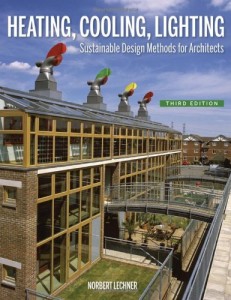This site has a huge range of ideas of green technology and sustainability. Very interesting to think about integrating these ideas into architectural design and engineering...
http://inhabitat.com/green-technology/
Sunday, September 25, 2011
Thursday, September 22, 2011
Sustainable innovation inspired by nature
The importance of the study of history has furthered my thinking on the importance of many subjects in their relation to design. Besides history, what about economy, culture, and science and how do those outside subject relate back into architecture? The idea of studying history of architectural design relates directly to architecture students and professionals. But what has been done to link the idea of science and architecture? Is the importance of knowing and understanding science going to cross paths with architects and design? In my initial scans of topics and question I have found ideas of this that have not been talked about in school. There are many things outside my major about science that affect design in my major. If am going to try and solve issues of sustainability and figure out solutions to modern problems, there are huge possibilities when you welcome "a biologist to the design table" in an architectural firm. Architecture is not only about design and forms of spaces, but the idea that different professional expertise can and will help to design and shape our architecture. This idea relates to every design. A designer takes the demands and wants from a client and produces a building off of what they have in mind. My theory is that if you take the expertise of someone out of a science major, and design around what they know, you will still be able to produce a design but will have a greater impact as two worlds come together.
I find that in all my topics of interest that orbit this idea of sustainability, the most important and interesting thought I have on the subject is the most focused idea of bio-mimicry. This is going to be my primary focus of my ideas that lead directly from the first broad idea of sustainable communities. I find it is the first step in solving the issue. All the subjects are important but the first step one can go through in solving the overall subject of sustainability is to start with the micro scale of the idea and investigate the fully broken down underlying ideas.
Saturday, September 17, 2011
Bedzed Complex: London England
The most important precedent to my thesis is the Bedzed Complex built in 2002 by Bill Dunster; an architect from London. The building is designed for efficiency and sustainability. It was not an intensional masterpiece of form and color but instead a complete and beneficial design of function and rationality. This kind of design was not so much of sketching intricate concepts and creating a piece of art. I believe there is a day and a time where creative design was very important. The modernest movement with Corbusier brought out discoveries of efficiencies and "Compactness". In the Cite de Radiouse, Corbusier used architectural design to create efficiencies of modular organization. The architectural designs of the time were important to discovering something we still use today.
So what is the most crucial point that an architects must discover and design for today?
EFFICIENCY. As Corbusier solved problems of urban design many years ago, today architects must solve and address the issue of energy consumption and sustainability in todays time. Buckminster Fuller was designing to solve for these real time problems in his modular ideas and structural innovations of the geodesic dome. The Bedzed complex and the Philip Merrill Environmental are building that address real time issues. Some architects today are still hung up on past time affairs, still trying to make a sculptural express of function, and literally do nothing for our planet with overwhelming energy consumption. This issues we are in today can be solved in architecture...
"The possession of arbitrary power has always, the world over, tended irresistibly to destroy humane sensibility, magnanimity, and truth."
-Olmsted
http://www.floornature.com/architettura_sostenibile.php?id=2&sez=21
Wednesday, September 7, 2011
Inspirations
Where in prefabricated home design do we see a great strive towards introducing an ecological solution? Prefabricated homes are great. Sustainability and an affective ecological solution is key to the future of this planet and our resources. I see two parelles of great ideas but what is the future of architecture capable of when somebody focuses their attention on creating a crossroads of these two ideas?
Nature and Architecture
This is something that many design school and professionals have not quite come to yet. This idea of architecture and nature as the biggest interest when it comes to the general subject of design. How do we transform architecture into a self sustaining organism of nature... like the rest of the living things. Buildings constantly take away, use energy and resources in it's lifecycle. We need to figure out how to build a building the same way nature produces a tree or an animal. The future of architecture is to design a self sustaining premises that does not harm the global ecology but in time give to mother nature and save the planet from dying off.
He uses the word "biomimicry"in the video. A quick search led me to a great page on the some more insite on the ideas that fortify the concept.
http://biomimicryinstitute.org/about-us/what-is-biomimicry.html
He uses the word "biomimicry"in the video. A quick search led me to a great page on the some more insite on the ideas that fortify the concept.
http://biomimicryinstitute.org/about-us/what-is-biomimicry.html
Prefabricated Architecture
The idea of a prefabricated home is amazing. It's a new way of looking a residential homes and is starting to become a huge industry. I find this subject of modular design incredible as it can greatly improve our efficiency and way we build in the modern day. If we can do this now with residential, what are the possibilities we do this with every kind of construction?
Subscribe to:
Comments (Atom)

